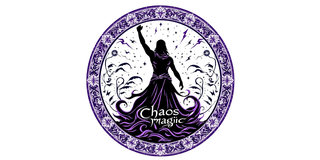In this path, the magician is not some distant, abstract priest, but a god of both labor and battle. They are at once the farmer and the warrior, the destroyer and the protector. They choose to believe in themselves—not because they have been validated by others, but because belief is a tool. Belief becomes a weapon wielded consciously, a force that shapes outcomes. Evolution is not granted—it is claimed. This magician stands not as a servant of unseen powers but as a sovereign. Their allegiance is to freedom, not control. They may embody chaos, but it is not chaos for its own sake—it is the chaos of creation, of transformation, of revolution. Eventually, all who walk this road must confront the Abyss. It is not some external hell, but an inner void—a place where meaning, self-image, and certainty collapse. At the edge of this void waits a demon. This demon is not evil in any moral sense; it is the fragmented self, the echoes of doubt, fear, and unworthiness. It is the chaos within chaos. But this demon is not the enemy. It is a guardian. To meet it, understand it, and integrate it is to initiate a deeper form of power. The Abyss strips away illusions and forces the magician to face themselves completely. Survival through the Abyss does not leave one unchanged—it marks a rebirth.
Chaos magicians may use tools in ritual—an athame for clarity and will, a wand for desire and direction, a chalice for receptivity and transformation, a pentacle for grounding and manifestation. These tools are not sacred in and of themselves. They are mirrors of internal forces. Their use is symbolic, not mandatory. Their power lies in what they evoke in the mind of the magician. Stillness and silence also hold immense value. In a culture that glorifies distraction and noise, the chaos magician recognizes stillness as rebellion. In that quiet, the false selves fall away. The truths that cannot be spoken begin to stir. Through silence, the magician hears the language of the deep self—the one untouched by fear, pride, or conditioning.
In dealing with the world, some chaos magicians apply the model of Affinity, Reality, and Communication—three elements that shape both internal alignment and interpersonal dynamics. Affinity is the emotional resonance between beings. Reality is the shared agreement of what is “real.” Communication is the bridge that maintains or collapses both. Mastering this triad allows the magician to resolve conflicts, influence outcomes, and understand others more clearly. It becomes another form of magick—one that does not require candles or incantations, only presence and intent. This tradition often rejects imposed moralities rooted in guilt, shame, and fear. Desire is not sin. Pleasure is not failure. The pursuit of joy, love, ecstasy, and personal power is not a deviation from spiritual development—it is a crucial part of it. The chaos magician builds their own ethics from direct experience, not from external authority. They are not amoral—they are self-authored.
There is no singular Truth in this path, only layered understandings. No fixed dogma, only evolving systems. To be a chaos magician is to be a wanderer, an experimenter, a sovereign force in a shifting cosmos. Transformation is continuous. The work never ends. And that is the point. The path is not one of certainty, but of freedom. The goal is not perfection, but participation. You do not follow the light—you become it, flickering and wild.











